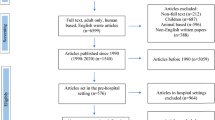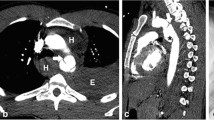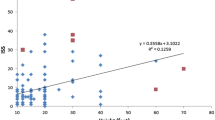Abstract
Background
Rib fractures in children under the age of 2 years have a strong correlation with non-accidental injury (NAI). Follow-up radiographs can improve detection.
Objective
To evaluate the value of the follow-up chest radiograph in suspected non-accidental injury.
Materials and methods
The study included all children less than 2 years of age who were investigated for suspected NAI in our institution between January 1998 and October 2003. Prior to January 2000, only selected patients were asked to attend for a follow-up chest radiograph. From January 2000 onwards all children were asked to reattend.
Results
Of 200 children included in the study, 59 (29.5%) reattended for a follow-up chest radiograph. The follow-up film provided useful additional information in 7 (12%) of the 59 children. In two children rib fractures were noted only on the follow-up chest radiograph. In a further two patients additional rib fractures were noted. Additional dating information was obtained for two patients. For one child both additional fractures and dating information were noted.
Conclusions
The follow-up chest radiograph provides useful information in children with suspected NAI and it is recommended that it should be included routinely in the imaging investigations of these children.


Similar content being viewed by others
References
James SL, Halliday K, Somers J, et al (2003) A survey of non-accidental injury imaging in England, Scotland and Wales. Clin Radiol 58:696–701
Barsness KA, Cha ES, Bensard DD, et al (2003) The positive predictive value of rib fractures as an indicator of nonaccidental trauma in children. J Trauma 54:1107–1110
Cadzow SP, Armstrong KL (2000) Rib fractures in infants: red alert! The clinical features, investigations and child protection outcomes. J Paediatr Child Health 36:322–326
Williams RL, Connolly PT (2004) In children undergoing chest radiography what is the specificity of rib fractures for non-accidental injury? Arch Dis Child 89:490–492
Kleinman PK, Marks SC, Adams VI, et al (1988) Factors affecting visualization of posterior rib fractures in abused infants. AJR 150:635–638
Kleinman PK, Nimkin K, Spevak MR, et al (1996) Follow-up skeletal surveys in suspected child abuse. AJR 167:893–896
Ingram JD, Connell J, Hay TC, et al (2000) Oblique radiographs of the chest in nonaccidental trauma. Emerg Radiol 7:42–46
Author information
Authors and Affiliations
Corresponding author
Rights and permissions
About this article
Cite this article
Anilkumar, A., Fender, L.J., Broderick, N.J. et al. The role of the follow-up chest radiograph in suspected non-accidental injury. Pediatr Radiol 36, 216–218 (2006). https://doi.org/10.1007/s00247-005-0054-5
Received:
Revised:
Accepted:
Published:
Issue Date:
DOI: https://doi.org/10.1007/s00247-005-0054-5




